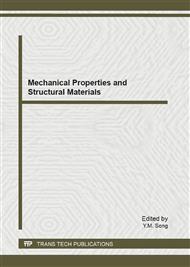p.3
p.7
p.12
p.16
p.20
p.24
p.28
p.33
Design of the Novel Calibration Platform for Piezoelectric Dynamometers
Abstract:
In order to accomplish the static calibration of piezoelectric dynamometer, the principle and structure of a multifunctional high-precision, high rigidity static calibration platform is manufactured in this paper. The screw loading mechanisms are used to achieve vertical force and horizontal forces, and its value can directly obtained by the standard measuring ring. The torque load adopts “force × lever arm" law, that is, the two horizontal loading mechanisms are relatively shifted to form force arm, and at the same time two parallel forces that have the same magnitude and opposite directions are generated. After accuracy and rigidity experiments, the static calibration platform has reached the calibration standard stipulated by CIRP-STCC. Undoubtedly, the calibration platform can use to calibrate unidirectional force, two component force sensor, three-component piezoelectric dynamometer and the drilling dynamometer, such as sensitivity, linearity, repeatability, hysteresis and crosstalk.
Info:
Periodical:
Pages:
3-6
Citation:
Online since:
October 2012
Authors:
Keywords:
Price:
Сopyright:
© 2012 Trans Tech Publications Ltd. All Rights Reserved
Share:
Citation:


